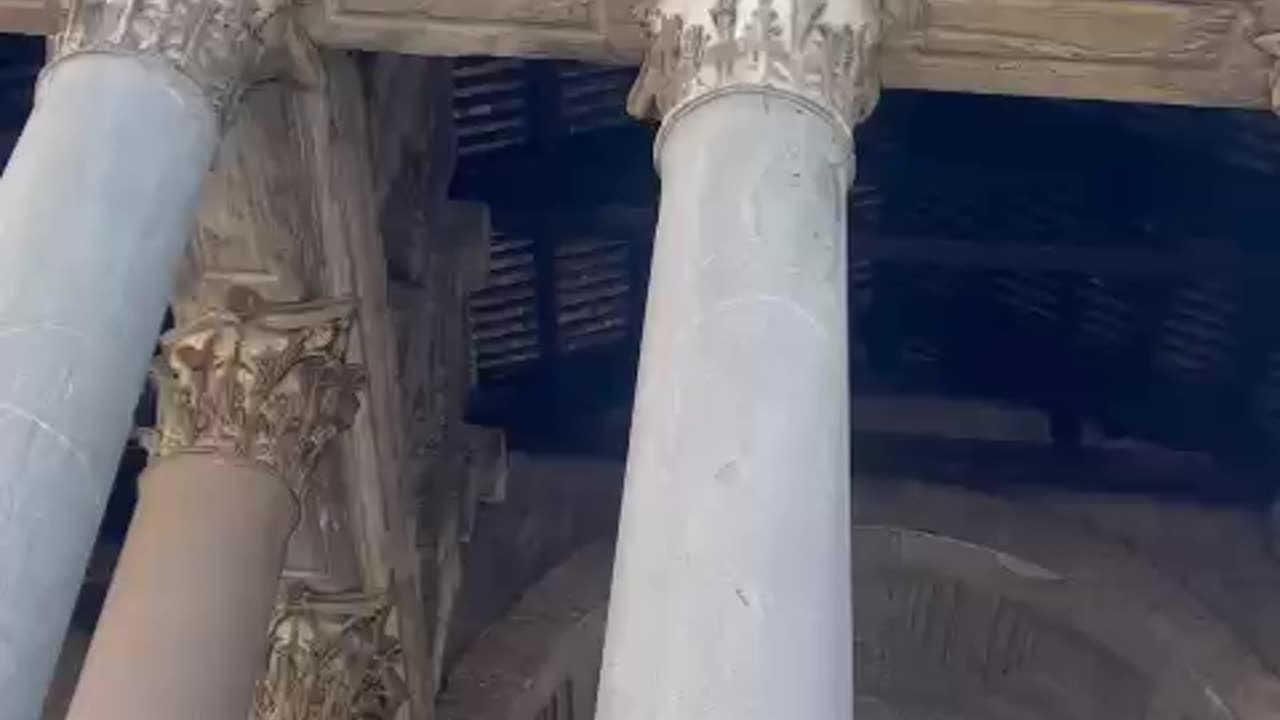Premium Only Content

Pantheon, Rome I city of architecture and history l
The word "Pantheon" refers to one of the most iconic and well-preserved ancient structures in Rome, Italy. The Pantheon is a former Roman temple, and it is renowned for its remarkable architecture and historical significance. Here are some key details about the Pantheon in Rome:
1. **Historical Significance**: The Pantheon was originally built between 118 and 128 AD during the reign of the Roman Emperor Hadrian. It was constructed as a temple dedicated to all the gods of ancient Rome, which is reflected in its name, as "Pantheon" means "temple of all the gods."
2. **Architectural Marvel**: The Pantheon is celebrated for its innovative architectural design. Its most distinctive feature is the massive domed roof, which was a revolutionary engineering achievement for its time. The dome is made of concrete and is the largest unreinforced concrete dome in the world. The oculus, a circular opening at the apex of the dome, provides the only natural source of light and is a striking architectural element.
3. **Interior**: The interior of the Pantheon is equally impressive. The vast, cylindrical chamber is illuminated by the oculus, creating a mesmerizing interplay of light and shadow. The dome's design allowed for even distribution of weight, and it remains a testament to the architectural prowess of ancient Rome.
4. **Transformation**: The Pantheon has had various uses over the centuries. It was converted into a church, known as Santa Maria ad Martyres, in the early 7th century, helping to preserve its structure. As a result, the Pantheon is one of the best-preserved ancient Roman buildings.
5. **Tourist Attraction**: Today, the Pantheon is a popular tourist attraction in Rome. Visitors come to admire its architectural grandeur, soak in the history, and experience the unique ambience of this ancient structure.
6. **Tomb of Raphael**: The Pantheon also serves as the final resting place for several notable individuals, including the renowned Italian painter Raphael, who is buried in one of its chapels.
The Pantheon remains a testament to the architectural and engineering prowess of ancient Rome, and its enduring legacy as a remarkable structure continues to captivate visitors and historians alike.
-
 LIVE
LIVE
Caleb Hammer
2 hours agoShe Came Here To Cancel Me | Financial Audit
55 watching -
 LIVE
LIVE
MYLUNCHBREAK CHANNEL PAGE
1 hour agoExposing It All
335 watching -
 LIVE
LIVE
The Big Mig™
4 hours agoA World Without Cancer w/ Expert John A. Richardson Jr.
5,086 watching -
 4:17:18
4:17:18
The Bubba Army
1 day agoTrump Pardoning Diddy? - Bubba the Love Sponge® Show | 7/30/25
44K10 -
 1:19:08
1:19:08
Dear America
3 hours agoGhislaine Maxwell WANTS TO TESTIFY + New Audio Reveals Trump’s Relationship With Epstein!!
106K82 -
 LIVE
LIVE
Badlands Media
9 hours agoBadlands Daily: July 30, 2025
3,945 watching -
 DVR
DVR
Matt Kohrs
10 hours agoHappy Fed Decision Day!!! || Live Trading
13.1K1 -
 59:26
59:26
Part Of The Problem
13 hours agoDave Smith | War Without Propaganda | Part Of The Problem 1291
4.34K5 -
 LIVE
LIVE
Wendy Bell Radio
7 hours ago2 Minutes And 17 Seconds
7,684 watching -
 LIVE
LIVE
JuicyJohns
2 hours ago $1.39 earned🟢#1 REBIRTH PLAYER 10.2+ KD🟢$500 GIVEAWAY
110 watching